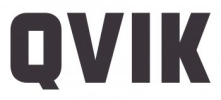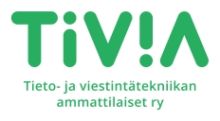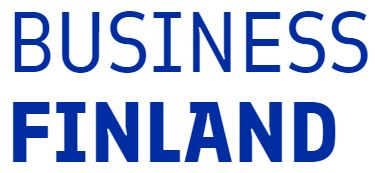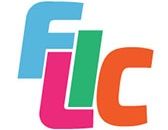Apple opens NFC payment capabilities to all app developers in Europe

Apple's recent decision to open NFC technology to third-party vendors marks a significant shift in its strategy, gradually aligning it with the open ecosystem seen in Android. With a ten-year commitment and strict regulatory oversight ensuring compliance, Apple expands the functionality of hundreds of millions of iPhones and opens new opportunities for business.
Apple has announced a ten-year commitment to maintaining and expanding its near-field communication (NFC) capabilities. The announcement came with Apple’s new operating system v.17.4., released on March 5, 2024.
Historically, Apple has restricted NFC use to Apple Pay. The company has slowly expanded NFC availability to businesses over the past five years, but it’s now switching gears.
Apple’s move is heavily influenced by European regulation, such as the EU’s new Digital Markets Act. The EU regulation aims for a fairer digital ecosystem, and mandates more openness and interoperability for tech platforms like Apple, Amazon, and Meta. The new NFC capabilities available due to the act will be rolled out exclusively in Europe, for now.
In the first phase, Apple’s added NFC functionality will be limited to new payment capabilities. Apple will begin supporting contactless smartphone payment transactions within banks’ banking or wallet apps. The change promises to enhance iOS devices’ functionality and competitive edge in mobile payments.
This article explores NFC, its use across industries, and what Apple’s latest decision means for businesses and users.
What does NFC do in mobile, and how can you use it in your industry?
Simply put, NFC is a set of communication protocols that enable two electronic devices to communicate securely within roughly four centimeters. Primarily used in smartphones, NFC allows devices to perform simple wireless transactions, such as mobile payments, quickly and securely. The latest update by Apple specifically utilizes host card emulation (HCE).
NFC capabilities are widely accessible on Android devices, having enabled plenty of applications to emerge. Users can pair devices, share content, and even program NFC tags directly from their smartphones without additional software.
To give you an idea of the versatile use cases for NFC, here are examples for industry-specific uses:
- Logistics: Businesses use NFC to track inventory and manage supply chains. NFC tags placed on items help track the movement and history of products throughout the supply chain.
- Healthcare: In healthcare settings, NFC enables secure patient identification and tracking, quick access to medical records, and easy monitoring of drug authenticity.
- Retail: Shops utilize NFC for interactive customer experiences. Examples include touch-to-learn-more labels on products, mobile coupon redemption, and quick checkout processes.
- Finance: NFC enables efficient contactless payments on platforms such as Apple Pay and Google Wallet.
- Travel and events: Travel and event industries use NFC tags to facilitate fast pass entries. They also use it to provide information directly to attendees’ smartphones, improving the overall customer experience and engagement.
Each application in the list leverages NFC’s core benefit — its simplicity and speed of communication. NFC facilitates almost instantaneous data exchange, typically within milliseconds. Rapid communication matches modern consumer expectations and is especially important for applications requiring quick authentication and transactions, such as payment systems and secure access controls.
iOS NFC capabilities now and what to expect down the line
While Apple will take its time opening NFC capabilities for businesses, the recent shift is expected to eventually make NFC on iOS a standard.
Despite Apple’s phased approach, the horizon is promising. Apple holds a significant market share in Europe, so the potential is big. By fostering a rich ecosystem of third-party NFC applications, Apple could enhance its platform’s versatility and user engagement, redefining user experiences and business opportunities.
Before the newest announcement, Apple limited the use of NFC on its phones to scanning tags. Looking at the Android market’s current state, we can predict iOS’s future NFC capabilities. Below is a list of functionalities immediately available with the newest iOS update, as well as a list of expanded capabilities we expect to become available later.
Immediately available
- Interactive marketing: Core NFC functionality, which has been available on iPhones for some time. It allows NFC tags to be placed in stores to give customers access to digital content, such as product information and offers, by scanning. While this capability isn’t new, recent updates from Apple may increase the reliability and speed of these interactions.
- Secure payment transactions: European banks can now offer their own NFC-based payment solutions on iPhones. This allows customers to use their banking apps to make contactless payments directly.
Expected to be available later
- Loyalty and reward programs: As for now, the introduced HCE capabilities do not extend to loyalty and reward programs. In terms of NFC, these programs remain constrained to scanning barcodes and QR codes to store loyalty cards in Apple Wallet. More interactive loyalty transactions already available on Android, like tapping to earn points or redeem rewards, are likely to be on Apple’s roadmap.
- Access to the secure element: Android apps can access the secure element for additional security functionalities. This is an NFC function likely to be offered for iOS apps in the future.
- More devices: Apple has yet to expand NFC capabilities on Apple Watch beyond Apple Pay. iPads currently lack NFC functionality, however, Apple has announced plans to introduce NFC capabilities to iPadOS later this fall. The expansion comes with the new regulatory changes under the Digital Markets Act, and is part of broader efforts to align iPadOS with iOS features. This will enable businesses to provide more seamless customer experiences across Apple devices.
- Public digital currencies, e.g., the digital euro: The ECB needs access to NFC to develop the digital euro’s offline features. Apple hasn’t yet granted this. However, it’s likely to comply in the future. Otherwise, it would exclude its users from future government-backed digital currency initiatives.
- Flexible and creative uses: To keep up with competition, a more comprehensive range of potential uses are bound to be uncovered within the next decade of Apple opening up its ecosystem. This includes functions such as peer-to-peer (P2P) connections and more flexible app development. Broader access to NFC will increase iOS apps’ competitiveness, permitting more creative and interactive uses for the technology.
- Geographical expansion: Apple’s current regional focus on Europe is a direct response to local regulatory requirements and significantly impacts the availability and functionality of NFC features. The restriction affects global banks and international retailers who might want to offer uniform services across all regions. Hence, we’re hopeful that Apple will eventually expand its NFC access to a global degree.
Strategic recommendations and conclusion
Banks and retailers should be aware of the differences between iOS and Android NFC capabilities and consider these when developing their apps. By tailoring applications to the platforms’ strengths and restrictions, businesses can fully leverage the unique features of both iOS and Android to cover a more extensive user base and meet diverse customer needs effectively.
As you develop NFC functionalities, take time to educate your customers on how to use NFC effectively, focusing on the benefits and ease of use. This will substantially increase your adoption rates and return on investment.
As Apple’s more open NFC ecosystem stems from legislation, staying up to date with European compliance requirements and innovating within these frameworks ahead of time will help you beat the competition to the newest features and differentiate your services.
In general, newly available NFC features on iOS will provide notable advancements to NFC technology utilization and digital offerings in the European market, paving the way for a more interconnected and efficient digital future.
Do you want to be among the first to improve your customer experience with the newest NFC features? Take a look at our mobile and payment optimization packages, or contact Sampsa and Sami below.
AUTHOR:
Andrei Sadovnicov
Senior Software Engineer, Team Lead
Qvik

Lisätietoja
Tagit
Liiketoimintaprosessi
 |
Asiakaspalvelu |
 |
Myynti |
 |
Tuotekehitys ja suunnittelu |
Erikoisosaaminen
 |
Ohjelmistokehitys |
 |
Mobiilikehitys |
 |
Maksaminen |
Teknologia
 |
iOS |
Tarjonnan tyyppi
 |
Konsultointi |
 |
Toteutustyö |
 |
Vuokratyövoima |
 Qvik - Asiantuntijat ja yhteyshenkilöt
Qvik - Asiantuntijat ja yhteyshenkilöt
 Qvik - Muita referenssejä
Qvik - Muita referenssejä
 Qvik - Muita bloggauksia
Qvik - Muita bloggauksia
It- ja ohjelmistoalan työpaikat
- Laura - Hankinta-asiantuntija, tietohallinto
- Laura - Development Manager, Operations
- Laura - ICT-asiantuntija
- Laura - IT Manager
- Nordea - Senior Fullstack Developer
- Innofactor Oyj - Business Architect
- Laura - Cloud Engineer
Premium-asiakkaiden viimeisimmät referenssit
- SD Worx - Kehitystyö SD Worxin kanssa takaa Clas Ohlsonille parhaat palkanmaksun prosessit kasvun tiellä
- Digiteam Oy - Case Esperi Care Oy: Ketterä kumppanuus vei Esperin verkkosivu-uudistuksen maaliin sujuvasti ja aikataulussa
- Kisko Labs Oy - Howspace Hub - Mukautuva oppimisen hallintajärjestelmä kasvaviin oppimisalustavaatimuksiin
- Kisko Labs Oy - Sanoma Pro: Multimediasisältöjen hallinnan uudistaminen
- Kisko Labs Oy - Svean helppokäyttöinen palvelu asiakkaan verkko-ostosten hallintaan
- Kisko Labs Oy - Yhtenäinen käyttöliittymä luovien alojen ammattilaisille
- Codemate - Digitaalisen murroksen nopeuttaminen Flutterin avulla
Tapahtumat & webinaarit
- 27.11.2024 - Green ICT -ekosysteemitapaaminen III: Ohjelmistojärjestelmien virrankulutuksen mittaaminen ja kasvihuonepäästöjen arviointi
- 27.11.2024 - Digitaalisen asiakaskokemuksen uusi aikakausi
- 28.11.2024 - Webinaari: Keskity myyntityön laatuun!
- 28.11.2024 - Copilot-webinaari – Mielekkäämpää tietotyötä turvallisesti
- 04.12.2024 - Kuinka oikea matka- ja kululaskujärjestelmä tehostaa prosesseja?
- 05.12.2024 - Green ICT VICTIS -hankkeen kick off -tilaisuus
- 15.01.2025 - Datavastuullisuuden valmennus: hanki valmiudet vastuulliseen datan ja tekoälyn hyödyntämiseen
Premium-asiakkaiden viimeisimmät bloggaukset
- Zimple Oy - Pipedrive vai Hubspot? Kumpi kannattaa valita?
- SC Software Oy - Jatkuvat palvelut – asiakaslähtöistä kumppanuutta projekteista ylläpitoon
- Timeless Technology - Ohjelmoitavat logiikat (PLC): Ratkaisevat työkalut automaatioon ControlByWebiltä.
- Kisko Labs Oy - Heroku: Ohjelmistokehittäjän ykköstyökalu skaalautuvien sovellusten rakentamiseen
- SD Worx - Näin luot vakuuttavan Business Casen palkkahallinnon ulkoistukselle
- Timeless Technology - Kyberriskien tunnistaminen Profitap IOTA verkkoanalysaattorin avulla.
- GidiUp Oy - Ai hitto -päivä: Kun sesonki pääsee taas yllättämään

|
Digitalisaatio & innovaatiot blogimediaBlogimediamme käsittelee tulevaisuuden liiketoimintaa, digitaalisia innovaatioita ja internet-ajan ilmiöitä |



















































